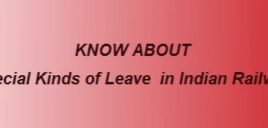How are phase breaks (AC) or power gaps (DC) handled by the locomotives?
July 16, 2019
The catenary has breaks or gaps in its electrical continuity every once in a while at points where successive sections are connected to different substations. A neutral section of catenary is usually provided between the two live sections of different phases or connected to different substations. At such points, single locomotives do not drop
Read More
How do the new 3-phase AC locos (WAP-5, etc.) work, and how do they compare with the earlier locos?
July 16, 2019
Three-phase AC locos such as WAP-5 use some fairly new technology as compared to the earlier generations of diesel-electrics and electrics. In most of the earlier locos, the traction motors driving the axles are DC motors. DC motors were used because they afforded (in those days) far superior speed and torque control compared to AC motors — the
Read More
What’s the history of electric traction in India?
July 16, 2019
The first electric train ran between Bombay's Victoria Terminus and Kurla along the Harbour Line of CR, on February 3, 1925, a distance of 9.5 miles. In 1926, Thana and Mahim were connected. In 1927, electrification was complete up to Kalyan. In 1928, Borivili in the north was connected (Colaba-Borivili of WR being inaugurated on May 1). In 1929,
Read More











